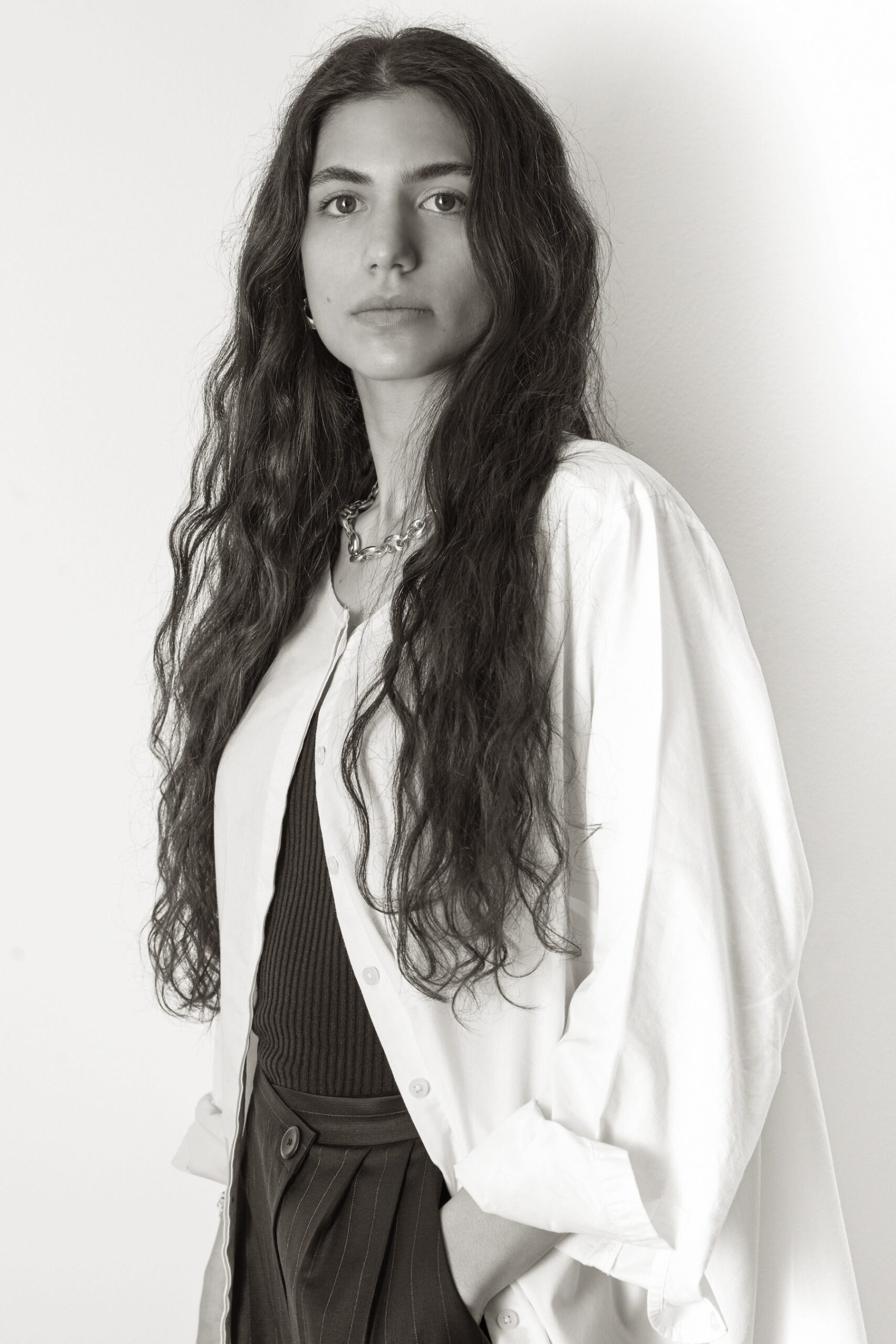
What I Would Take Home, if Milan Let Me Keep Anything
Fashion didn’t just show up to Milan Design Week, it took over the stage. Serra Duran Paralı followed the feeling, and picked the pieces she would bring home if she could.
Fashion’s presence at Milan Design Week has gone from subtle to dominant. Brands are staging full-scale environments, often with or without any products. From sonic experiences to curated archives and artist-made objects, the focus has shifted from craft to narrative.
Design Week, once about materials and innovation, is increasingly a space for worldbuilding and brand spectacle. It mirrors the arc of Fashion Week: from trade event to content machine. The risk is the same, marketing eclipses the object. Some installations, like Loewe’s teapots or YSL’s Perriand pieces, meet design on its own terms. Others use it merely as a backdrop. But Milan isn’t gone. Salone still holds weight. And if there’s one thing this city always delivers, it’s presence.
Sometimes it’s a sound that doesn’t try to impress, a shadow that says more than the spotlight, or an object that quietly unearths a memory you didn’t know you would forget. Nothing flashy. Just the kind of thing that never begs for your attention, yet ends up holding it anyway.
Here is a list of the works that stopped me this year.
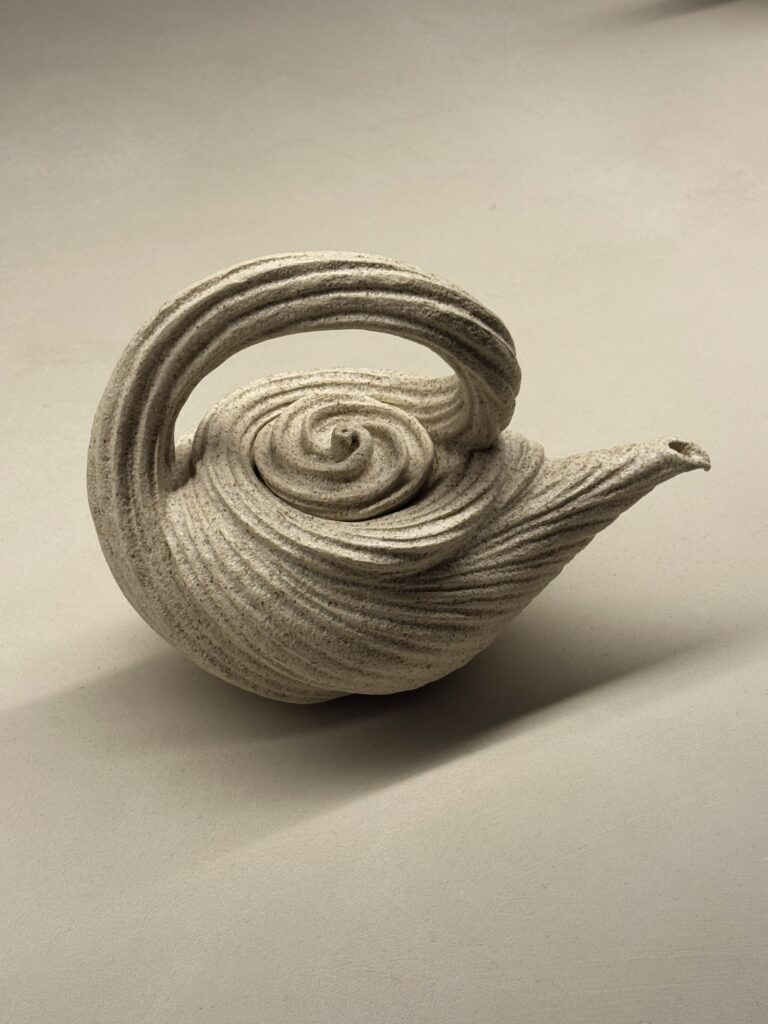
Loewe Teapots Exhibition – Chōtō: Listening to the Waves (2024)
By: Takayuki Sakiyama
Where I saw it: Loewe Teapots Exhibition, Palazzo Citterio in Milan.
What it is: A sculptural reinterpretation of a teapot from Sakiyama’s Chōtō series; a swirling, meditative form where interior and exterior merge seamlessly, finished in his signature sand glaze.
Why I would take it home: Because it felt alive. The piece doesn’t pour; it breathes. Its spiral recalls the mingei tradition and the rugged coastline near Sakiyama’s home. Chōtō, meaning “listening to the waves,” says it all, standing in front of it, I could almost hear the ocean’s pull and release. I couldn’t touch it, but I contemplated it long enough to hear the sounds of waves. The same series is also held in the collection of the Met Museum; I appreciate how Loewe elevates craft to this level and gives it the stage it deserves.
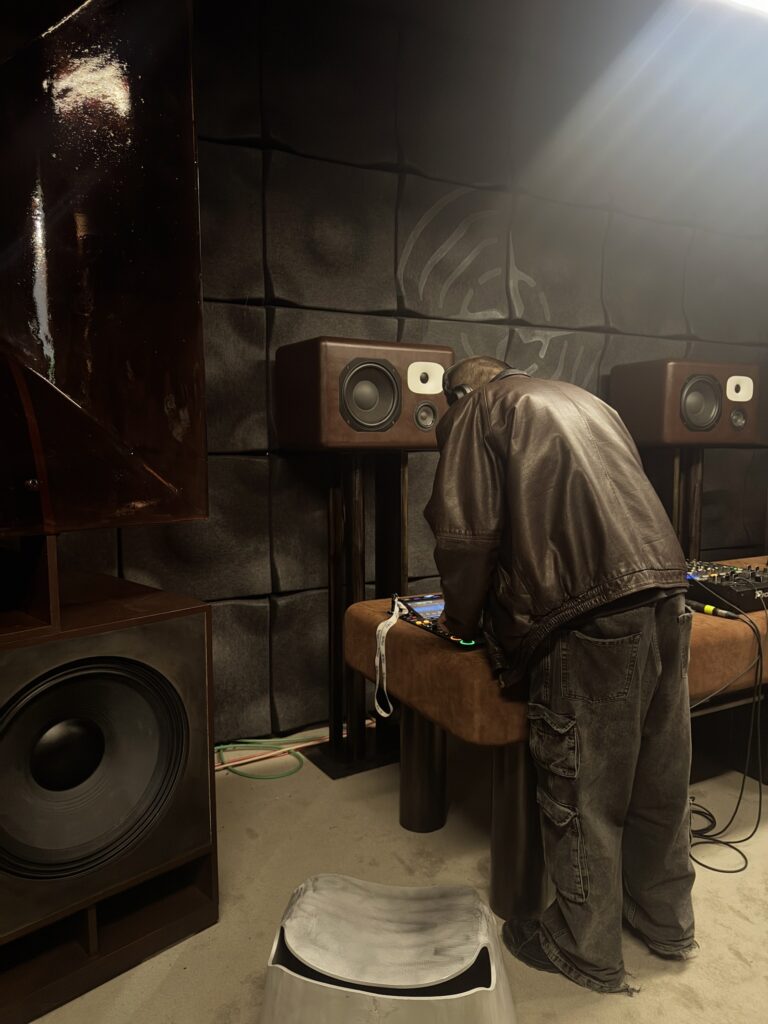
Friendly Pressure: Studio One Sound System
By: Shivas Howard-Brown (Friendly Pressure)
Where I saw it: Capsule Plaza, Spazio Maiocchi; first inside the Stone Island LAB, then outside during the “Moon Safari” listening session.
What it is: A custom-built, high-fidelity sound system featuring unity horns and subwoofers engineered by Bosco Taylor, inspired by 1950s Klangfilm horns and housed in a Scarpa-esque acoustic environment.
Why I would take it home: Because it didn’t just play music, it sculpted it. I first heard it inside the Stone Island room at Capsule Plaza, but it was during the outdoor “Moon Safari” session that it truly hit me. A sound so full it felt physical. It wrapped around me like fog. I didn’t want to leave. Maybe that’s because Moon Safari is an album I carry in my heart; hearing it reimagined by Vegyn through this system made the whole experience feel, well… more Friendly Pressured. Like hugging a friend you really like but don’t quite know yet; warm, close, slightly mysterious.
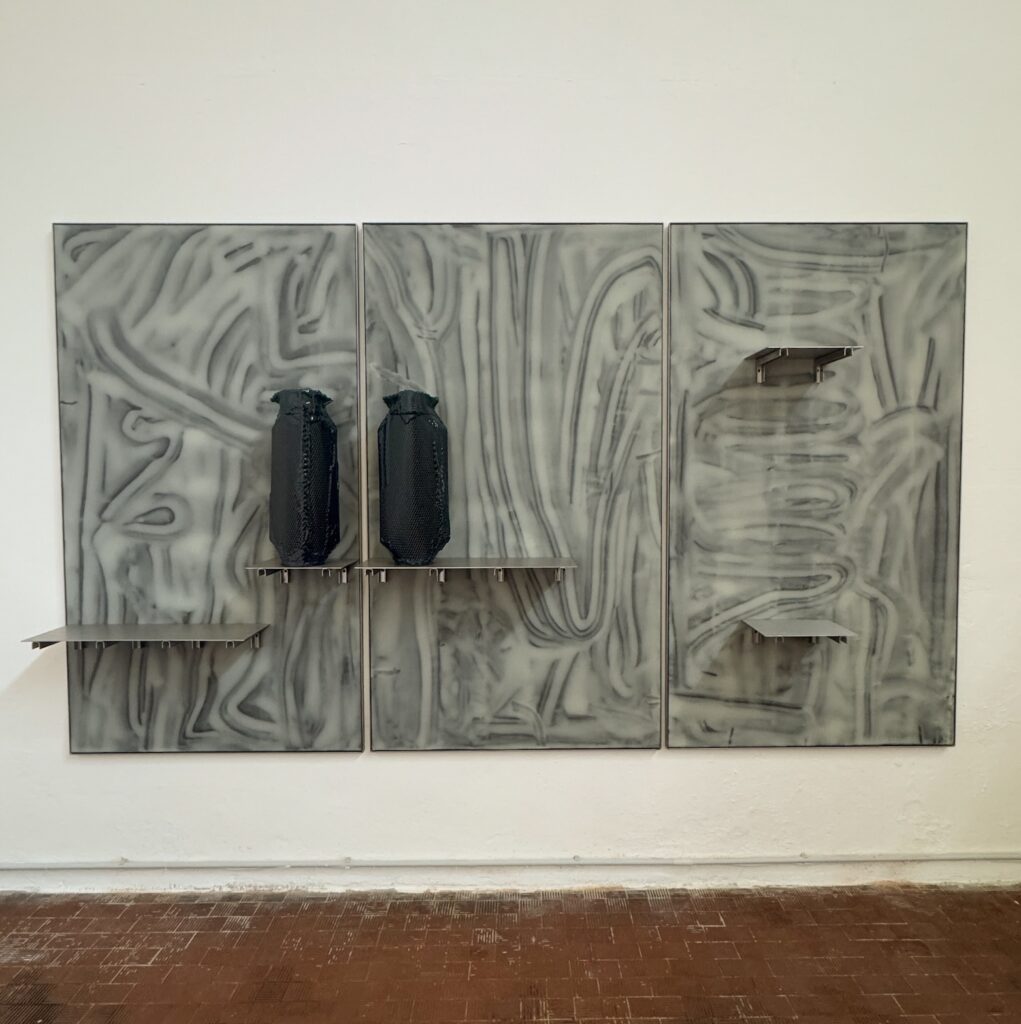
Frame Shelving V3.2 / V3.3 / V3.4
By: LS GOMMA & CONCORDE
Where I saw it: NEWS FROM HOME by LS GOMMA & CONCORDE, Uppercut.
What it is: A modular shelving system made of PU rubber, metal mesh, and stainless steel, industrial materials shaped into sculptural fragments of power and memory.
Why I would take it home: Because history is an opulent tapestry, one with grinder access and the weight of its own narratives. In News from Home, LS GOMMA and Concorde reimagined the past through the lens of the future, distorting classical ideals and reconstructing them in a language that challenges nostalgia and hierarchy. Versailles, once a stage for power and aesthetic control, becomes here a playful ground for reinvention. These shelves felt like props from a dismantled empire, radical new forms dressed in the drama of historical opulence. They don’t just hold objects; they hold time, warped and wonderfully unstable.
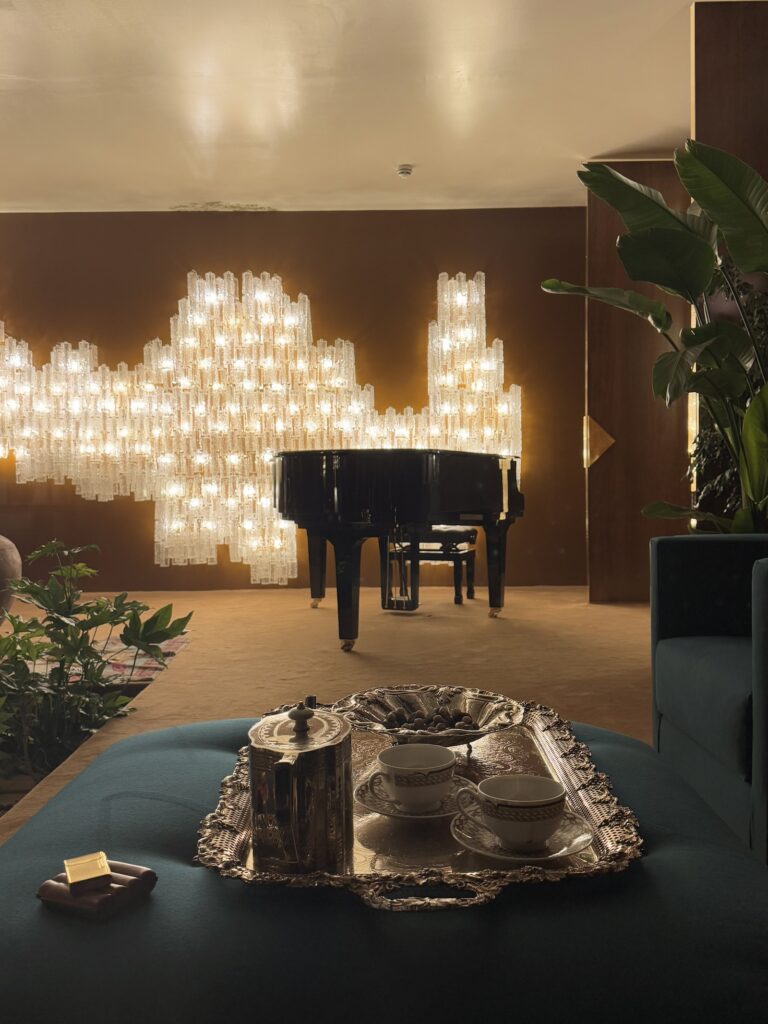
Loro Piana – La Prima Notte di Quiete
By: Loro Piana Interiors, scenography by Dimoremilano
Where I saw it: Palazzo Visconti.
What it is: An immersive installation that blurred the line between cinematic fantasy and interior design. Guests moved through a retro-style cinema lobby and into a series of rooms inspired by 1970s and ’80s interiors; all styled in Loro Piana’s most refined fabrics. Sound design by Nicola Guiducci enhanced the mood.
Why I would take it home: Because it was total worldbuilding. Every room; bedroom, dining area, bathroom, garden whispered its own scene. Antique paintings sat beside contemporary Dimoremilano pieces, sculptural tables and sofas melted into shadows. A portrait of Romy Schneider watched from the wall like a ghost of European cinema. A single drop of water fell rhythmically onto a coffee table beside broken porcelain plates strewn across a carpeted floor; dramatic and uncanny, yet intimately familiar. It was like a film I stepped into.
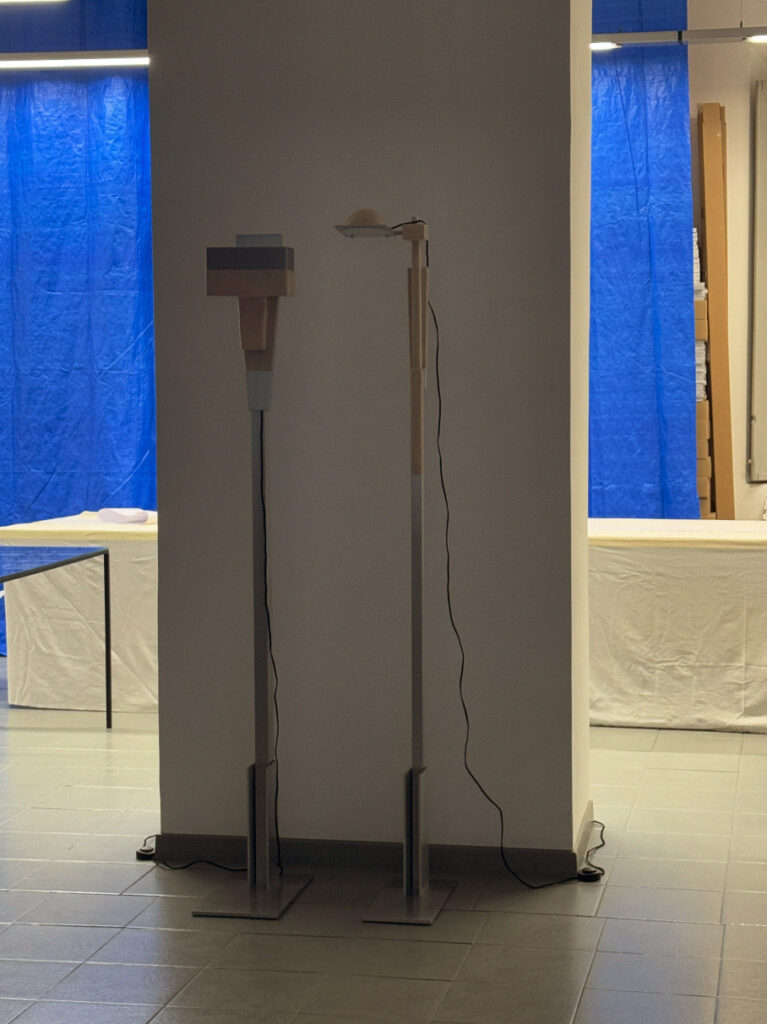
Sub-Currents (At Work)
By: Rooms Studio
Where I saw it: Studio Frey Barth, Via Kramer 32, Milan.
What it is: Subtly political yet resolutely poetic, this exhibition presented a new collection of furniture, lighting, and objects that captured the essence of Georgian history.
Why I would take it home: I loved the lighting very much, it felt like the best of both worlds. Each piece carried a quiet power; a trace of place, resilience, and continuity. It didn’t need to shout to be heard. The work felt like an ode to a lived and inherited past, turned into something tactile, thoughtful, and quietly radical.
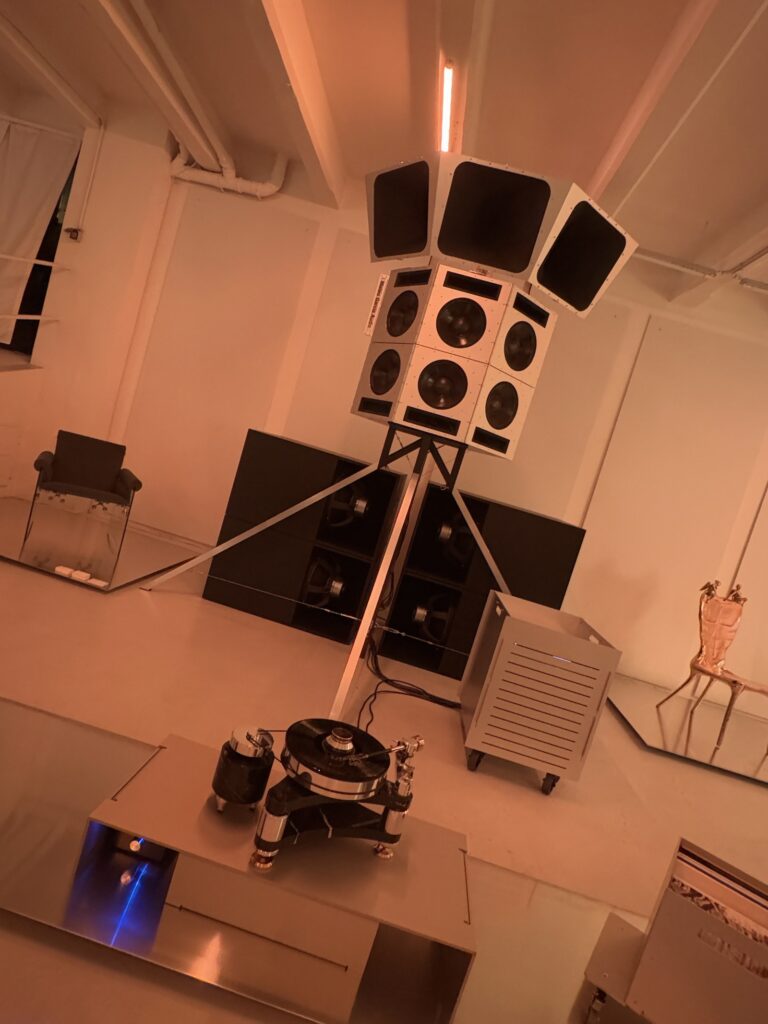
Deoron – Elevating Objects
By: Mateo García (among others)
Where I saw it: Deoron Installation, Porta Venezia Design District, Milan Design Week 2025.
What it is: Tucked into a minimalist, all-white space below ground level, Deoron; Elevating Objects was a quiet revelation.
Why I would take it home: Because it was a space that didn’t shout. Instead, it pulsed silver hues, sculptural restraint, and a sound installation that felt like falling into rhythm with a new kind of material poetics. Mateo García’s speaker set was the standout for me: a work that made you listen with your eyes and touch with your ears. The marble inclusion in the turntable was a particularly elegant surprise; a material not just for permanence, but for resonance. A whisper cast in steel. I felt very proud to have the opportunity to work with him for the Vitruta London store.
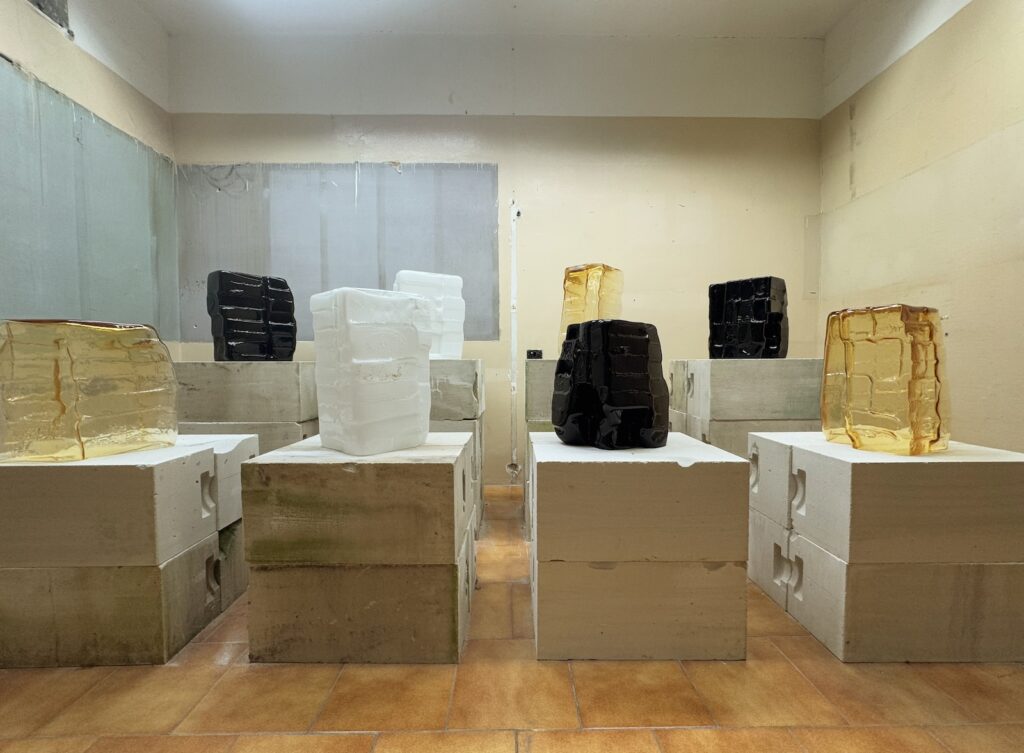
Two-Fold Silence
By: 6:AM Glassworks
Where I saw it: Piscina Cozzi, Viale Tunisia 35, Milan.
What it is: An installation set within the historic Piscina Cozzi, a public bath abandoned for decades, where new and unfinished pieces are displayed in dialogue under the theme Two-Fold Silence.
Why I would take it home: The setting did half the storytelling. The interplay between fragile glassworks and the weathered bathhouse tiles felt reverent, not nostalgic; as if design had stepped into silence and chosen to speak softly but clearly.
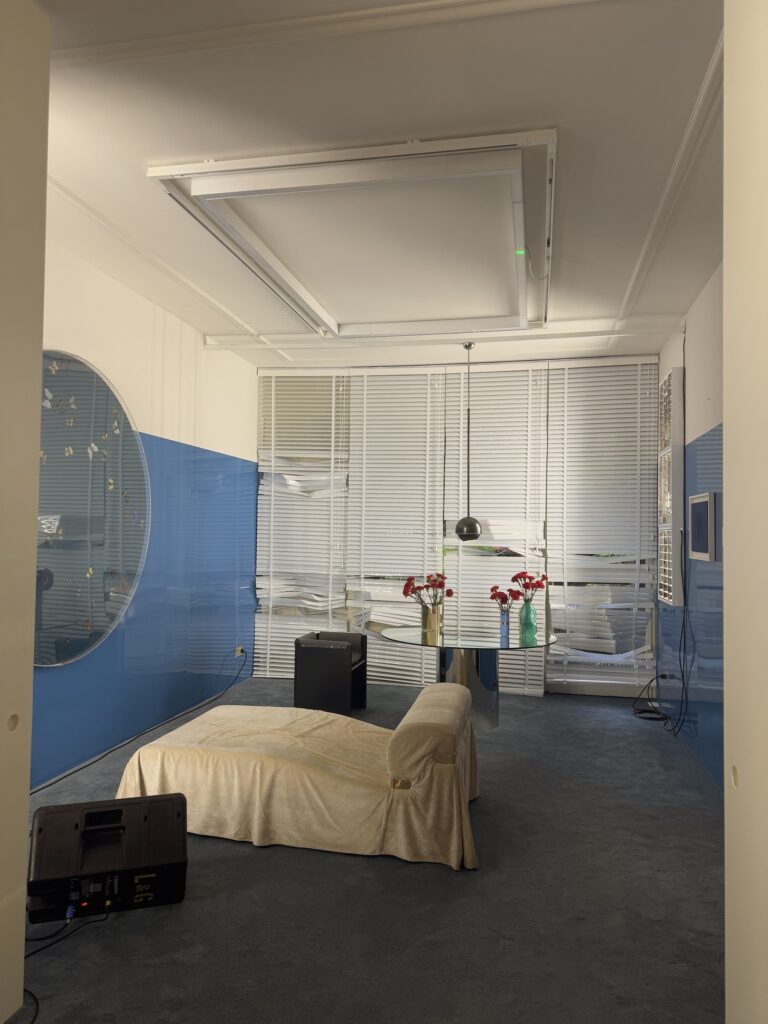
Welcome to the Blackout – Scenography at Phillips Auctions
By: Emiliano Salci & Britt Moran (Dimorestudio)
Where I saw it: Maison Philips Milan, Via Lanzone 2, Milan.
What it is: An atmospheric installation where Interni Venosta’s dramatic works were paired with a curated selection of objects by Dimorestudio.
Why I’d take it home: Because it made you feel like something was about to happen. The staging was full of tension and style; not forced, but charged. A curated blackout where light became narrative, and objects became actors. When I entered the space, Thom Yorke’s “The Hooks” was playing, which sent me directly to Luca Guadagnino’s Suspiria. Obviously, I loved it.
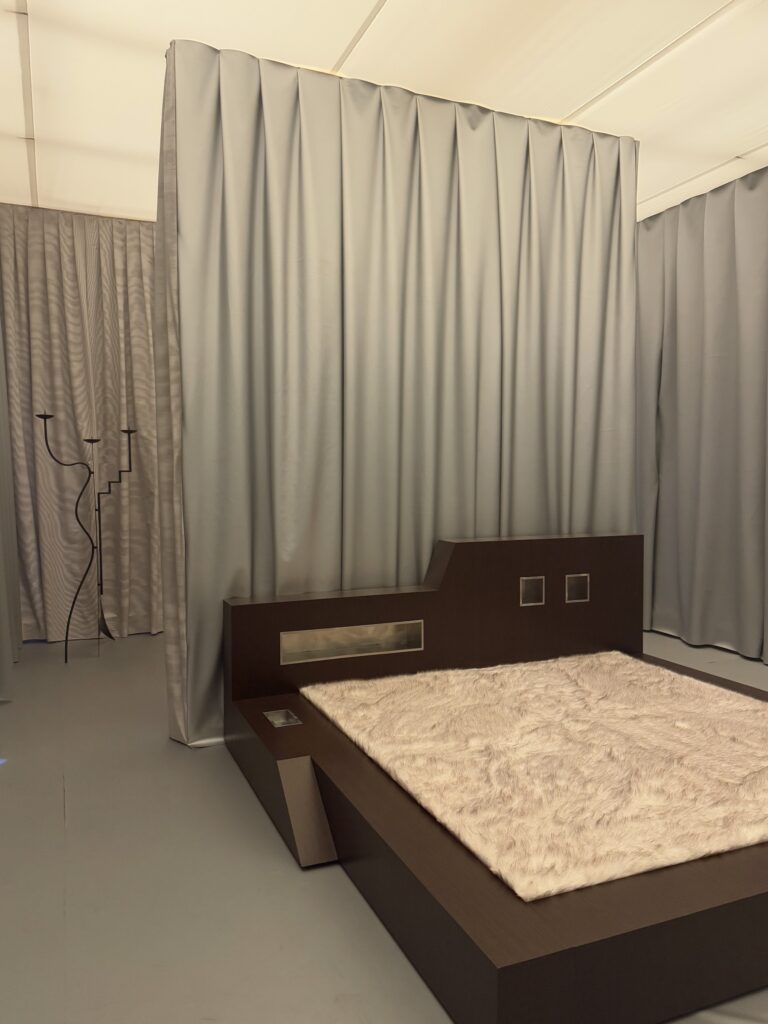
Garance Vallée x Monde Singulier Collection
By: Garance Vallée
Where I saw it: Monde Singulier Presentation, Milan Design Week 2025.
What it is: A furniture series that reads like a language of curves; architectural, primal, and precise.
Why I would take it home: What I like most about Garance Vallée’s work is that you recognize it immediately; playful, theatrical, geometric, yet functional. It’s sophisticated without losing its sense of joy. It didn’t try to seduce me; it stood unapologetically, like a presence. Entering the space, I felt an immediate transformation.
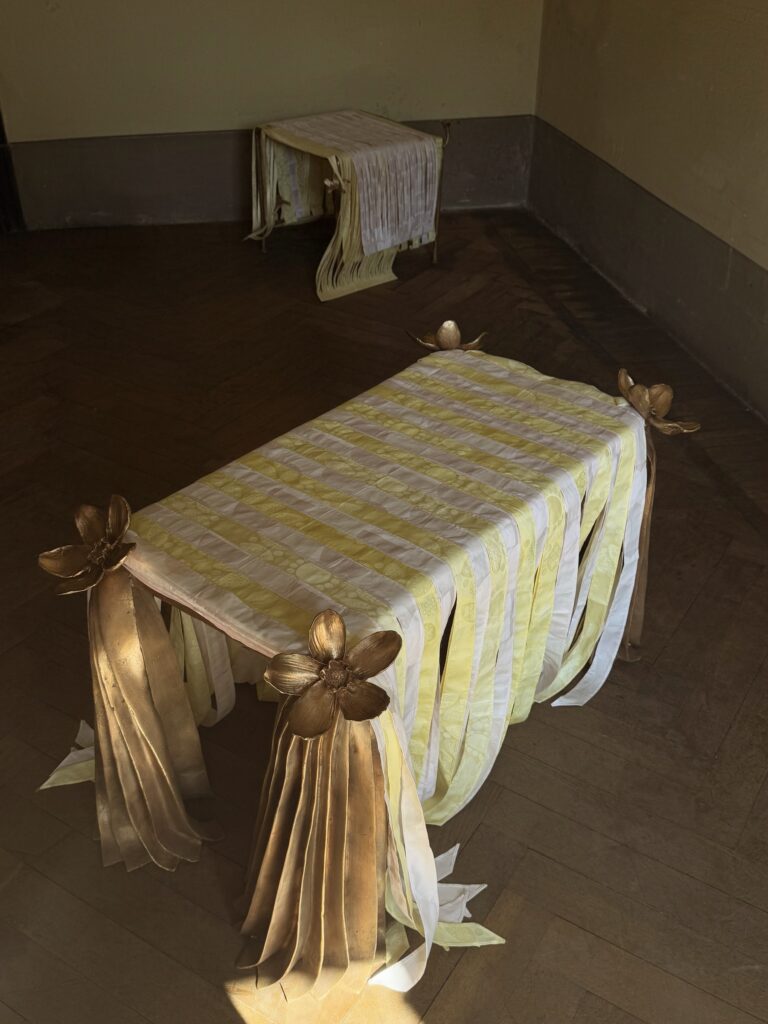
Conie Vallese x Super Yaya Installation
By: Conie Vallese & Super Yaya
Where I saw it: Alcova, Villa Bigatti, Milan Design Week 2025.
What it is: An installation blending sculptural forms and textile fragments, quiet, raw, and beautifully unresolved.
Why I would take it home: It wasn’t the emotion that struck me first, but the visual wit of it all, the table and two chairs in bronzed metal, adorned with delicate flower ornaments and veiled in Super Yaya’s signature yellow tape fabric. The contrast between their ornamental language and the raw materiality gave it an odd elegance.
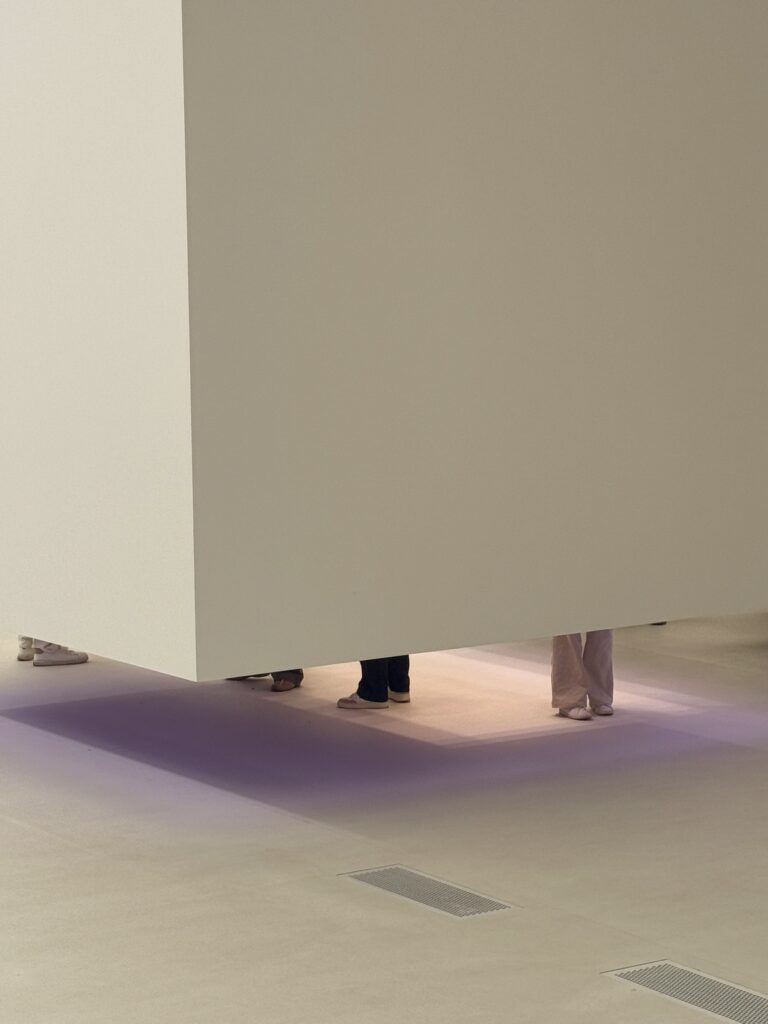
Hermès – Scenographic Composition
By: Hermès
Where I saw it: La Pelota, Milan Design Week 2025.
What it is: A poetic scenography composed of suspended white blocks casting tinted halos; like colored shadows floating in air.
Why I would take it home:The objects themselves didn’t leave a strong impression, but the space did. The scenography, with its soft lighting and circular columns, created a calm, contemplative atmosphere. It was more about rhythm and restraint than product. A quiet example of how spatial design can still captivate, even when the content doesn’t.
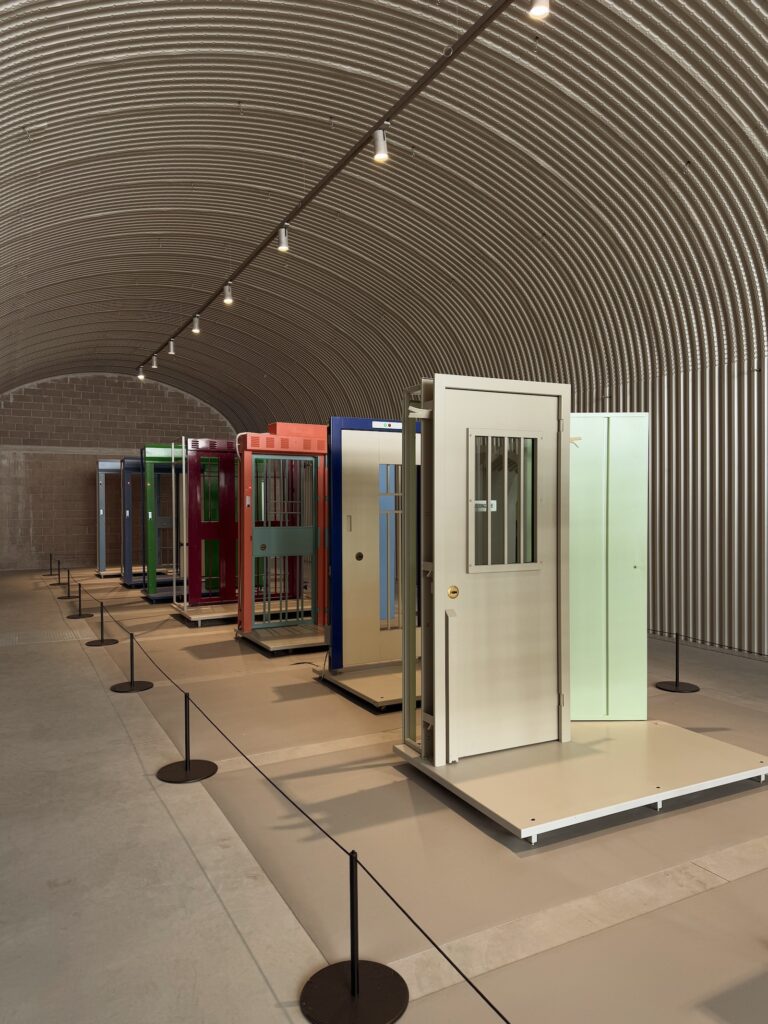
Prison Times – Spatial Dynamics of Penal Environments
By: Andrea Caputo
Where I saw it: Dropcity, Via Sammartini 54; repurposed railway warehouse tunnels.
What it is: The inaugural exhibition at Dropcity, spanning over 1,000 square meters across five tunnels beneath Milan’s Central Station. The exhibition explored the architecture and design of incarceration, revealing how spatial planning influences daily life and behavior within prison environments.
Why I would take it home: Because it reframed design as an ethical act. The typological catalogue of prison furnishings, stripped of dramatization, quietly exposed how function overrides feeling in these spaces; and yet, within these constraints, human gestures of adaptation emerge. This wasn’t about aesthetic impact, it was about how objects can reflect systems, and how design can become a form of resistance. That made lots of sense since that’s what occupies my headspace nowadays.
